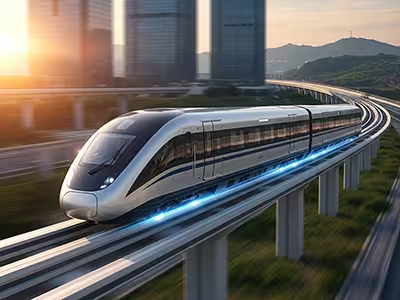Maglev: The Future of Frictionless High-Speed Transportation
What is Magnetic Levitation? Everything You Need to Know About Maglev Trains
Reading time : 1 minute,
Discovery Chepe Id-805-TEC
Published in
09-05-2025

Maglev technology: redefining transportation and connecting the world at the speed of innovation.
Future mobility seems to float, literally, on invisible rails. Magnetic levitation vehicles, also known as maglev, represent one of the most promising technological advances in modern transportation. Their operation is based on physics principles with huge impact: the use of magnetic fields to eliminate surface contact and reduce friction to the minimum.
How they work: Maglev trains use superconducting magnets or electromagnets that generate repulsion or attraction with the rails, lifting the vehicle. Once elevated, it can reach speeds above 600 km/h, moving almost noiselessly and with high energy efficiency.
Pioneering countries:
1- Japan: Leads with the Chüö Shinkansen project, a train that will connect Tokyo and Nagoya in less than 40 minutes.
2- China: Develops and operates several lines, including the Shanghai maglev, the fastest commercial train in the world.
3- Germany: Known for the Transrapid project, although with less commercial presence compared to Asia.
4- South Korea: Also invests in maglev technology as a sustainable alternative.

Maglev Technology: How It Works and Its Environmental Benefits
Recent progress: Japan has successfully tested trains exceeding 600 km/h, while China explores next-generation models combining artificial intelligence and renewable energies. Research is also pointing to the use of maglev in urban transportation systems, not only in long-distance routes.
Challenges:
a) High costs: Specialized infrastructure demands multi-billion-dollar investments.
b) Energy consumption: Although efficient in motion, it requires significant power to maintain magnetic fields.
c) Global adoption: Developing countries face barriers to implement such large-scale projects.
Outlook: In the next decade, magnetic levitation vehicles are expected not only to transform intercity travel but also to connect international routes. European initiatives are already studying ultrafast corridors between capitals.
For more information, visit Scientific American.
See Also
Discovery Chepe
Most read...















